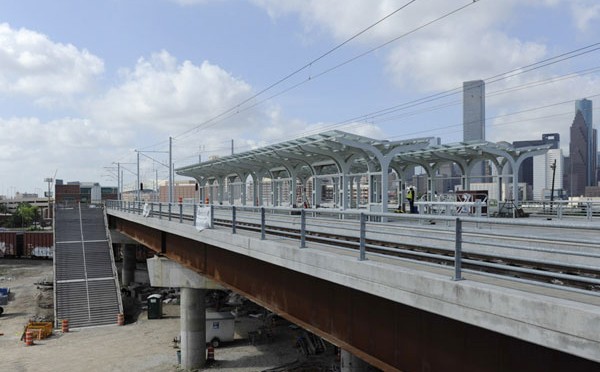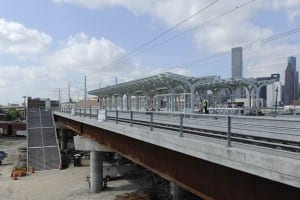As a resident of Houston, I get it… this city likes its construction projects built fast and CHEAP. So many major projects in Houston have been done with little regard for preservation or aesthetics. It’s definitely not an uncommon modus operandi for all of Texas, but even among the major cities, Houston is still the king of fast and cheap.
But this lack of planning on the forefront creates problems later on. People have known for over a century that the safest way to build rail mass transit is grade separation from a city’s road infrastructure, especially if the train is going to be in a high population area. This is of course why so many cities from London, New York, Chicago and even Dallas have chosen to build their mass transit systems mostly in this way. Grade separation, whether below ground like a subway or above ground like an elevated railway, is always safer than having multiple transport mode interactions at-grade. Unfortunately in Houston’s transit rail plan, safety is taking a backseat to cost. As Clifford Pugh at Culturemap writes, this reality had deadly consequences even this week in Houston…
A woman on a bicycle was killed in a collision with a light rail train in downtown Houston Monday morning, a spokesman for METRO confirmed to KHOU Channel 11.
The incident happened shortly after 8 a.m. on Main street at Walker street. An account by METRO indicates the college student, who has not been identified, exited a northbound train at the Main Street Square station with her bike, walked it to the intersection and immediately got on it at Walker and rode away, crossing the intersection when she was hit by an oncoming southbound train. The train lurched to a stop approximately 20 yards later with the woman’s body pinned underneath.
This week’s accident involved a cyclist, but many have been caused by motorists, and even pedestrians having to interact with the rail line at-grade. The issue is compounded by the fact that Houston is a car-centric city, where drivers are still less likely to be aware of trains, pedestrians, cyclists, or anyone else who need to share the road. This was a big problem in 2004 when the Red Line opened, but the city continues to struggle. Crash incidents peaked again in 2008, and still remain higher than most other metros when compared by transit mile. Though the city has spent millions of dollars to try and better educate all parties on safer road usage, these horrific accidents continue to occur.
The simplest solution to this problem? Building rail lines correctly from the start. Grade separation isn’t cheap… on the front end it’s a more expensive proposition. But, ironically, so is building roads. Of all the freeways that sprawl out across the city and metropolitan area, no one has ever thought to question whether they should be built at-grade. Freeways are always built with grade separation, and we need to hold our rail transit with the same level of import. I agree with the opinion that a full subway, and all of the expensive digging that would have to occur to make it happen, is probably not a good fit for Houston. But elevated rail is a much more reasonable proposition. Houston’s 7.5-mile Red Line was finished in 2004 and cost $394 million dollars. But no one ever asks how much money has had to be spent since then because of all of these accidents. Could we have saved money, time and human lives had we invested properly in rail transit from the start?

